





Frost -- or the lack of it -- determines both the end and the beginning of our growing seasons. Every gardener understands the importance of monitoring this weather event. But what exactly causes this beautiful white glaze to form?
After months of warm weather through summer and early fall, both daytime and nighttime temperatures begin to decline. Finally one morning we wake to find the first frost of the season glistening on our gardens, lawns, automobiles and other objects left outdoors overnight. At its most basic, frost is simply water vapor, an invisible gas formed from evaporated water that is always present in the air.
DID YOU KNOW?
Dave’s Garden has a page that allows you to find the average first and last frost dates for your zip code!
Go to: http://davesgarden.com/guides/freeze-frost-dates/
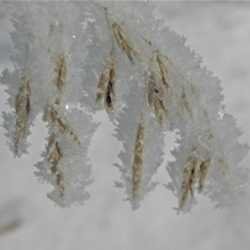 How Frost Is Formed
How Frost Is Formed
Whenever the air cools, the water vapor condenses, transforming back into droplets of water. Depending on weather conditions, these droplets may then become mist, fog, rain or snow. The water that condenses close to the ground becomes droplets of dew.
Water vapor condenses into dew when the plant leaves or grass blades become colder than the air around them. The temperature at which this occurs, called the dew point, is variable, depending on the air’s humidity. Once the dew point dips below 32 degrees Fahrenheit, water vapor near the ground will become frost rather than dew.
Just like snow, frost is made up of tiny, often microscopic, ice crystals. Frost crystals are usually six-sided and frequently take on needle-like shapes just as snow crystals do. The difference between the two is that snow crystals form in the clouds, while frost crystals form on solid surfaces near the ground.
Weather Conditions And Frost
When conditions are right, frost forms overnight because once the suns goes down, the air temperature quickly drops. A cold, clear and windless night provides ideal conditions for frost formation. In contrast, a night sky containing low clouds essentially creates a blanket over the earth. This keeps warm air on the surface, and thus makes frost formation less likely.
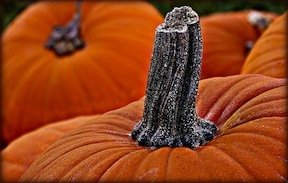
Types of Frost
Some particular kinds of frost have their own names. When frost forms patterns on glass windows, it can resemble lacy plant leaves, so it's sometimes called fern frost. For window frost to form, the glass must be exposed to freezing temperatures on the outside and humid air on the inside. With the advent of better-insulated double pane windows, window frost is not such a common sight as it was in the past.
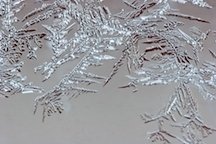
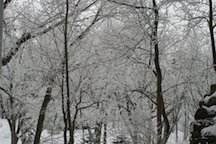
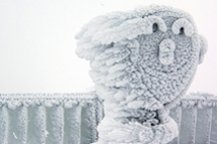 Fern Frost
Fern Frost
Hoar Frost
Rime
Hoar frost is a particularly severe frost deposited when there is a good supply of water vapor that forms into extra large ice crystals. It takes its name from the Old English “har,” meaning old or venerable (derived from the same root as the German honorific “Herr”). When covered with hoar frost, bushes and whole trees take on a particularly grizzled appearance. On a cold winter morning you have a good chance of seeing hoar frost on exposed plants near 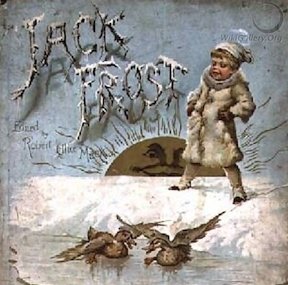 an unfrozen lake or stream, according to Kenneth G. Libbrecht, a professor of physics at the California Institute of Technology who specializes in the physics of crystal growth. The water source supplies large amounts of water vapor, capable of condensing into impressively large crystals overnight.
an unfrozen lake or stream, according to Kenneth G. Libbrecht, a professor of physics at the California Institute of Technology who specializes in the physics of crystal growth. The water source supplies large amounts of water vapor, capable of condensing into impressively large crystals overnight.
Another distinctive form of frost is called rime, which is made of water droplets carried in mist or fog. When the wind blows these droplets onto objects that are below 32 degrees Fahrenheit, they freeze into ice crystals. Rime looks more like solid ice than hoar frost, which is feathery.
Frost in Folklore
The personification of frost formation is a mischievous elf-like creature named Jack Frost, who visits on crisp, cold nights, leaving behind fanciful designs on window panes and a coating of white on the ground. He's also sometimes depicted with a paintbrush, giving leaves their rich autumn colors. This character may have originated in Norse folklore as Jokul (icicle) Frosti (frost). Russian fairy tales attribute cold and frosty weather to an old man named Father Frost. In German folklore, frost is caused by an old woman who shakes white feathers from her bed.
Sources:
University of Illinois Extension: Harvesting and Storing of Pumpkins, Winter Squash and Gourds
Snow Crystals.com: Guide To Frost
Images:
“Frost on the Calendula” by donkeycart
“Frost on Grass” by withrow (Marilylle Soveran)
“Frost” on window by Moonrhino (Jonathan Bliss)
“Hoar Frost on the Trees” by tomlothian
“Mr. Happy Rime” by Mouser NerdBot (Mouser Williams)
“Frost on the Pumpkins!” by Weaselmcfee
“Jack Frost” by John Lawson, in the public domain
Copyright © www.100flowers.win Botanic Garden All Rights Reserved